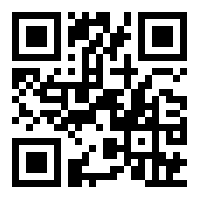Chances are, your phone brought you right to a web page - and that's exactly what QR codes are meant to do!
QR codes like this one have a lot to offer but not many people understand what they do or how to make them. Lets fix that.
“What can I use a QR code for?”
Quick Read Codes (QR codes) can be used in several different implementations but they all boil down to one main goal: to share data.
While QR codes are more popular in other countries, common use cases in the United States include but are not limited to:
· Loyalty programs
· Lunch programs
· Time tracking
· Product location tracking
· Marketing campaigns
How QR Codes Work:
There are a lot of standards and a surprising amount of structure in what looks like a box of chaos. The short answer is that the dot pattern is kind of like another language. The order of the dots represents the data you encode and any other device that speaks the QR code language can understand it. Another similarity is binary. While a massive list of ones and zeros means nothing to you and me, all computers speak binary.
If you want to know more about the patterns and encoding standards you can read what Wikipedia has to say about it.
What can I encode?
QR codes can be encoded with four types of information or modes:
1. Numeric – only allows numbers and stores up to 7,089 characters.
2. Alphanumeric – Allows the alphabet, numbers and special characters including $, %, *, +, -, ., /, : and stores up to 4,296 characters.
3. Binary – 1’s and 0’s and stores up to 2,953
4. Kanji – Chinese characters and holds up to 1,817 characters.
Example Time:
It’s lunchtime at Belmont High and the lunch lady team takes a collective breathe as the sea of hangry high school students races toward them. But they aren’t worried because every student ID and food item is equipped with a QR code. This way they can quickly scan each item to collect the sku and price and then scan the student’s ID to collect the account which funds will be withdrawn from. All this required data was encoded into the QR code format for quick scanning but that’s not all. Ingredient lists are on the product QR Codes and Allergies are on the student QR Codes. Justin is allergic to soy and that salad dressing contains soy. Thanks to QR codes he was saved from making an uncomfortable mistake.
“How do I encode a QR code ID card?”
You don’t need anything special to create and encode your very own QR code. They can be printed on anything and there are a number websites out there with free QR code creators. Simply upload the data you want to store and print it out. That’s one of the best things about them! They are cheap, easy to make and easy to scan. They are also able to hold more data than a traditional barcode.
If you want to utilize QR codes on your ID cards, check out our tutorial below. With ID Maker software, encoding and printing QR codes is quick and easy.
ID Maker Tutorial: How to Encode a QR Code ID Card with ID Maker 3.0 [Video]
